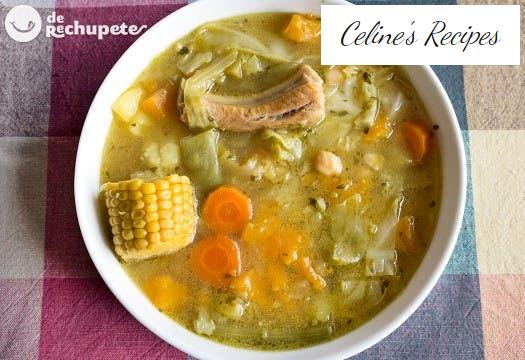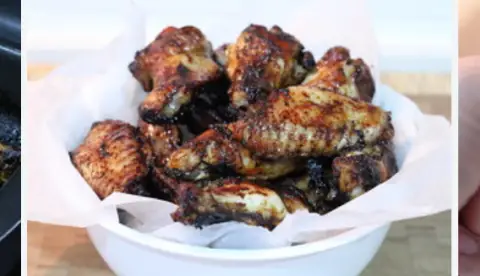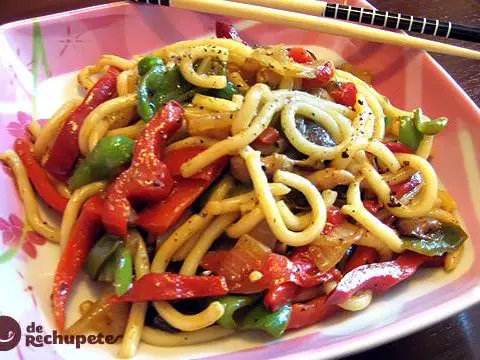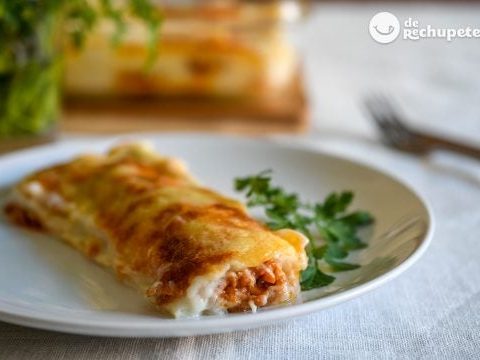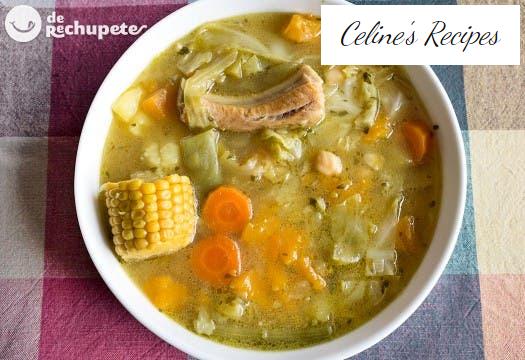
Info.
- Easy
- 50 minutes
- For 4 people
- 0.8 € / person
- 310kcal per 100g.
- · ·
How to make pottage or canary stew. By definition it is a spoon recipe whose base is vegetables and vegetables cooked with plenty of water.
This one, made of vegetables, is typical of the Canary Islands and accepts all that you want to add, so it is very difficult to find two stews that taste the same.
The one that I present in this recipe has been cooked with all the vegetables that are usually added, but you can omit some according to the taste of the diners. One of the most curious things to prepare a Canarian recipe is to check the different way of calling vegetables. In the list of ingredients I have added (in brackets) the name by which they are known on the islands.
Like many other regions, Canarian gastronomy is influenced by other cuisines, especially by the heritage of the Guanches and the influence of Latin American gastronomy, most especially that of Venezuela. We can even find reminiscences of continental African gastronomy.
On the blog you can find a few Canarian recipes, since I went on vacation to the islands I have introduced some of their dishes in my kitchen, potatoes with mojo , mojo picón sauce or pumpkin tortillas . Today I have decided on a mixture of stew and stew , the most typical way of consuming vegetables in the Canary Islands. This is a clear example, although the most famous and traditional is watercress stew .
The complete Canarian stew (in this recipe we have omitted many types of meat) is a simple meal, whose origin is in the mainland stew, although it is said to have many similarities with that of southern Portugal.
Throughout the Spanish geography we find cooked in multiple variants, the Galician , the Basque, a traditional Catalan escudella , the Asturian pot, the famous Madrid stew , the mountain stew, the rotten pot, this Canarian stew , the Andalusian or pringá , the Cocido Maragato , the gypsy pot from Murcia , the preacher’s dam in Aragon, and some that I will surely forget … all variants of the same idea, cocido . One of the virtues of the pot is that it allows you to do without many of its ingredients, and that is that the provisions were not always the same. Due to the strength of this dish, it has always been considered a unique dish.
Among all, the most difficult ingredient to get on the peninsula is potatoes. The close historical relationship between the Canary Islands and America , together with the characteristics and climatic diversity of the islands, explain the variety of potatoes they have there. Many varieties, like the beautiful potato, white, black, new, sore, … all very good.
In this case we should not worry if we do not have them, you can substitute them for potatoes and the dish will be equally delicious. I recommend that you taste the broth carefully, it is delicious. It is a nutritious and low calorie dish.
Before cooking this canary stew
- In the event that we decide to add the rib we have to desalt it previously. We wash it to remove the salt grains attached to the surface. Then we put it in a container with water 12 hours before cooking it.
- One of the important steps is the choice of chickpeas, you have them as a dried or already cooked legume and you can find various sizes. I recommend using dry chickpeas because they allow you to control the salt point of the stew by avoiding the treatments that canned foods bring. I also prefer not to use preservative-treated chickpeas.
- The day before we put the chickpeas in warm water with a teaspoon of baking soda or a handful of salt. We leave them to soak overnight, usually 12 hours.
- We must wash them later to remove possible impurities. Better that we do not sneak any spoiled chickpea that can spoil a tooth, I say this from experience.
- After that time we will only have to drain and set aside until the moment to prepare the porridge.
- If you are going to use them already cooked, wash them very well without leaving any of the gelatin that surrounds the chickpea.
- We add them at the end of cooking the stew. Just so that they are well impregnated with the flavor of the rest of the ingredients.
- I must admit that this type of chickpea already cooked and packaged in a glass jar saves a lot of time in the kitchen. Although it is better to use them for other types of dishes such as a hummus or a salad .
Canarian stew preparation
The preparation of this stew is very simple. Basically it is about adding the ingredients and cooking them until they are well cooked.
- Chop the vegetables into cubes and place it in the pot in which we are going to cook. Peel the zucchini, cut it into cubes and add it. We do the same with the pumpkin and the carrot. The beans are very clean, we cut them into three pieces and add them. The onion is minced and we add it together with the vegetables.
- We wash the cabbage leaves, cut it into strips and inside. We cut the pineapple of corn in four pieces and to the pot.
- We incorporate the previously desalted rib. We have cut it by separating each of the strips so as not to find too large pieces when eating. Since it is a spoon dish.
- We add the hydrated chickpeas (if they are not cooked), a drizzle of extra virgin olive oil, salt and the meat broth.
- The next step is to make the garlic and parsley mash. To do this, we put the minced garlic, a lot of chopped parsley, a splash of olive oil, coarse salt in a mixer glass and chop it well.
- It is important that there is a homogeneous paste so that the pieces do not appear in the porridge. Its function is to give a touch of flavor.
- Add the saffron, cover with water until it covers all the content and remove.
Final cooking and presentation of the pot
- We put the pot on the fire and wait for it to boil. We leave over medium heat, keeping the boil for 45 minutes, stirring occasionally.
- We still have to add the potatoes. While the porridge is peeling, peel them and cut them into large dice. They are incorporated when there are 15 minutes left.
- When it’s done. Let it rest for 10-15 minutes and it will be ready to eat.
- A delicious stew a little unknown in the peninsula with which I assure you will make the wave at home. Be curious and investigate Canarian cuisine! It’s the reed!
Be sure to enjoy all the stews, casseroles, stews and yummy soups in our recipes for soups and stews.
